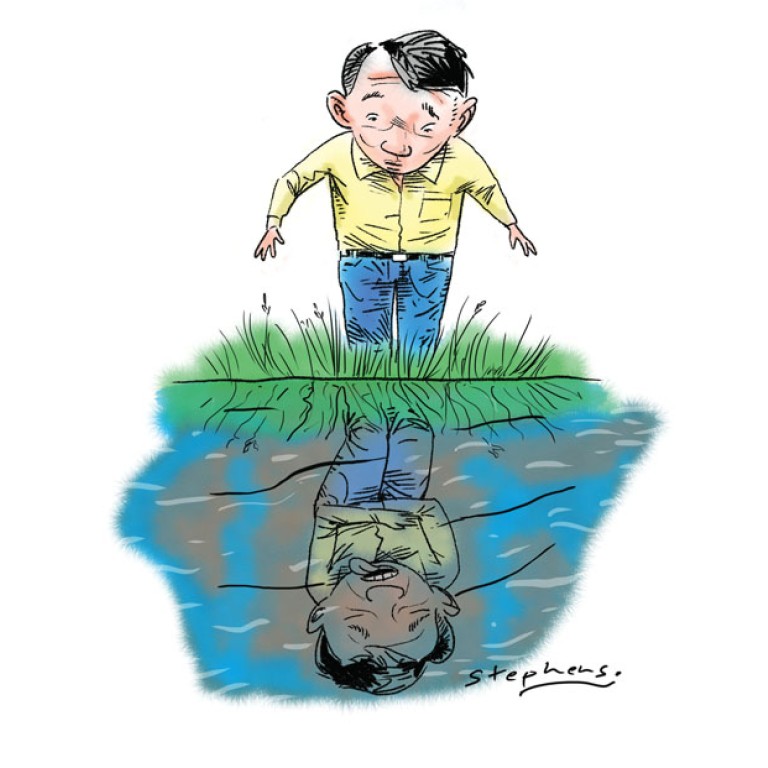
Pollution at the heart of China's water woes
Cesar Chelala says while China may recognise the scale of its water crisis, it is not doing enough to clean up its polluted waterways or reduce demand, focusing instead on costly diversion projects
While much attention is being paid to the negative consequences of environmental pollution in China, another crisis is brewing, with equally dangerous consequences for people's health and the nation's development: water scarcity.
Climate change, increasing urbanisation and the rise of the middle class will all create huge demand for water and lead to crop shortages by 2030, according to reports.
A lack of water is compounded by the high levels of water pollution. Hu Siyi, vice-minister at the Ministry of Water Resources, has said that up to 40 per cent of China's rivers were seriously polluted in 2011, with some 75 billion tonnes of sewage and waste water having been discharged into them.
According to Hu, about two-thirds of Chinese cities are "water needy" and nearly 300 million rural residents lack access to safe drinking water. More than 4 million hectares of land is irrigated with polluted water, according to estimates, which has a negative effect on crop yields, quality and food safety.
One reason for the high levels of pollution is that, with the rapid industrialisation, a large number of chemical plants were built along the Yangtze River and near critical drinking water resources. Those resources have been contaminated by large spills of toxic chemicals such as cadmium and chromium.
A report last year by the China Geological Survey found that 90 per cent of the country's groundwater is polluted. Estimates from the Ministry of Environmental Protection say the water from approximately 25 per cent of China's major rivers is so polluted that it can't be used for industry or agriculture. According to the Ministry of Supervision, there are around 1,700 accidents leading to water pollution every year.
This is a paradoxical situation since China is one of the most water-rich countries in the world. However, its resources are unevenly distributed; they are overwhelmingly concentrated in the south, leaving northern regions prone to a lack of water, a situation which is reaching crisis levels.
The Ministry of Water Resources has surveyed the country's waterways and revealed that 28,000 rivers have disappeared over the past 20 years, raising serious fears among environmentalists and government officials. Although some officials believe that such a dramatic decline could be explained by outdated mapping techniques, experts believe that a more plausible explanation is the country's rapid economic development and poorly enforced environmental guidelines.
In addition, China controls the headwaters of several important rivers in Asia, such as the Irtysh, Mekong and Brahmaputra. The damming of those rivers by China has provoked protests from the countries affected.
China's actions upstream may have dramatic consequences on the lower reaches, influencing water flow, floods, sedimentation levels, the presence of a variety of wildlife as well as people's livelihoods downstream.
To tackle its water shortage, the Chinese government is taking a series of measures, including the construction of the South-North Water Transfer Project, an estimated US$80 billion enterprise that is set to be more expensive than the Three Gorges Dam, the world's largest hydroelectric project.
The aim of the South-North project is to divert 45 billion cubic metres of water each year from the southern region to the north.
Such a huge project, however, has several drawbacks. Aside from the cost, perhaps the most important is the number of people who are going to be affected. More than 300,000 villagers are being relocated to make way for the canal, in many cases to low-grade farmland far from their original homes.
In addition, a project of this magnitude can destroy the natural ecology of the southern rivers with negative effects on people's health.
Because of the doubts about the quality of the water to be diverted, desalinisation is being tried as an alternative. However, desalinisation uses considerable amounts of energy to produce filters, and to process and transport clean water, argues Zhang Junfeng, an environmental activist and professor of environmental and global health at the University of Southern California. He also says desalinisation is a quick-fix solution which doesn't encourage people to conserve valuable resources.
Experts argue that the government should focus on reducing the demand for water through a more rational use of limited supplies, and by controlling pollution. In addition, new regulations should be enacted to lead to a more efficient use of water in industry and agriculture.
New cities should be built taking into consideration the availability of water, and polluters should be fined. Ultimately, many experts believe that the solution to China's water crisis is more political than technical.
